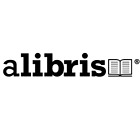Picture 1 of 1

Stock photo

Picture 1 of 1

Stock photo

Calculus on Manifolds : A Modern Approach to Classical Theorems of Advanced Calculus by Michael Spivak (1971, Trade Paperback)

AlibrisBooks (496284)
99.1% positive feedback
Price:
US $40.58
(inclusive of GST)
ApproximatelyS$ 53.04
+ $23.83 shipping
Returns:
30 days return. Buyer pays for return shipping. If you use an eBay shipping label, it will be deducted from your refund amount.
Condition:
Oops! Looks like we're having trouble connecting to our server.
Refresh your browser window to try again.
About this product
Product Identifiers
PublisherCRC Press LLC
ISBN-100805390219
ISBN-139780805390216
eBay Product ID (ePID)639620
Product Key Features
Number of Pages161 Pages
LanguageEnglish
Publication NameCalculus on Manifolds : a Modern Approach to Classical Theorems of Advanced Calculus
SubjectGeneral, Calculus, Topology
Publication Year1971
TypeTextbook
AuthorMichael Spivak
Subject AreaMathematics
FormatTrade Paperback
Dimensions
Item Height0.4 in
Item Weight7.9 Oz
Item Length8.2 in
Item Width5.5 in
Additional Product Features
Intended AudienceCollege Audience
IllustratedYes
Dewey Decimal517.34
Table Of ContentFunctions on Euclidean Space * Norm and inner Product * Subsets of Euclidean Space * Functions and Continuity Differentiation * Basic Definitions * Basic Theorems * Partial Derivatives * Inverse Functions * Implicit Functions * Notation Integration * Basic Definitions * Measure Zero and Content Zero * Integrable Functions * Fubinis Theorem * Partitions of Unity * Change of Variable Integration on Chains * Algebraic Preliminaries * Fields and Forms * Geometric Preliminaries * The Fundamental Theorem of Calculus Integration on Manifolds * Manifolds * Fields and Forms on Manifolds * Stokes Theorem on Manifolds * The Volume Element * The Classical Theorems
SynopsisThis little book is especially concerned with those portions of ?advanced calculus? in which the subtlety of the concepts and methods makes rigor difficult to attain at an elementary level. The approach taken here uses elementary versions of modern methods found in sophisticated mathematics. The formal prerequisites include only a term of linear algebra, a nodding acquaintance with the notation of set theory, and a respectable first-year calculus course (one which at least mentions the least upper bound (sup) and greatest lower bound (inf) of a set of real numbers). Beyond this a certain (perhaps latent) rapport with abstract mathematics will be found almost essential., This little book is especially concerned with those portions of "advanced calculus" in which the subtlety of the concepts and methods makes rigor difficult to attain at an elementary level. The approach taken here uses elementary versions of modern methods found in sophisticated mathematics. The formal prerequisites include only a term of linear algebra, a nodding acquaintance with the notation of set theory, and a respectable first-year calculus course (one which at least mentions the least upper bound (sup) and greatest lower bound (inf) of a set of real numbers). Beyond this a certain (perhaps latent) rapport with abstract mathematics will be found almost essential., This book uses elementary versions of modern methods found in sophisticated mathematics to discuss portions of "advanced calculus" in which the subtlety of the concepts and methods makes rigor difficult to attain at an elementary level.
LC Classification NumberQA612
All listings for this product
Be the first to write a review























